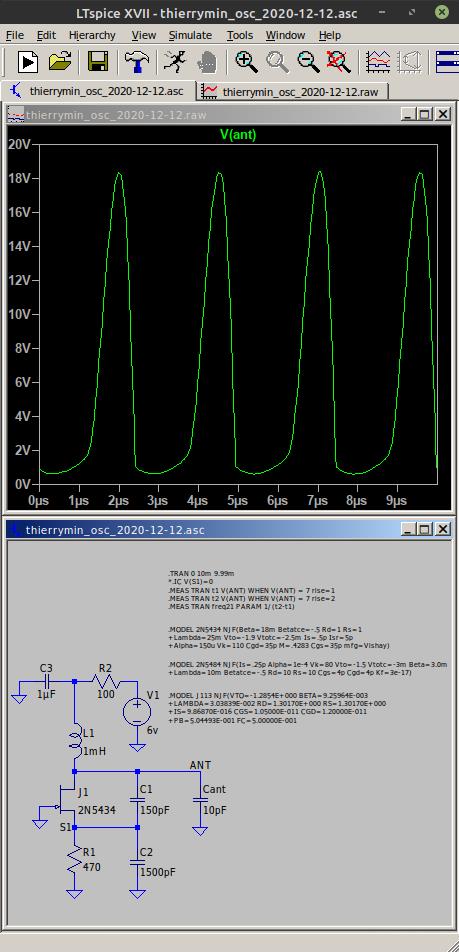"Had paludonho not only tried to simulate his circuit variant but also built it with real components, he would have seen that his simulation corresponds perfectly to reality since with the selected FETs, it simply can’t oscillate. The potentially 2x or 3x higher drain current leads to a bigger voltage drop across the source resistors which shifts the operating point closer to cutoff, where the amplification factor is logically smaller." - Thierry
My Thierrymin LTspice sim [LINK] oscillates with the 2N5434:

I think the 2N5434 is in the standard library, but I explicitly included it a .MODEL statement, and I got the params from here:
http://ltwiki.org/index.php?title=Standard.jft
If I had a 2N5434 around I'd maybe bench test it, but the sim voltage swing is rather low and non-sinusiodal, which seems typical of low supply voltage oscillators where the resonant coil is in series with the drain / collector (due to reverse conduction) and it doesn't have a digital use due to the sensitivity killing ~150pF in parallel with the antenna (which can be a useful thing for analog Theremins).
I don't think anyone would seriously argue that sims are the be all and end all to electronic design. But they can be a very effective means to managing design complexity that our poor brains weren't developed to handle. I mean, 90% of science is modeling in one form or another, whether it be via formulas, waveforms, FEA, Smith charts, etc. If you're like Bob Pease and have reached the point where sims do you no good for smaller circuits, well good on you, but most of us benefit from them, and don't see them as impediments to understanding, or some kind of a crutch that weakens the mind. Quite the opposite. Not an argument from authority, but I've spent a couple of decades doing digital design and I literally couldn't survive without sims. Digital teams always have guys sitting around simulating and looking for bugs. Even the simplest stuff can behave in crazy ways that you just can't predict up-front. Visibility into the inner workings is critical, and you can't easily probe memory contents or transistor currents. Models don't have to be perfect to give you insight into what's going on (one often actually prefers simplicity to high fidelity).



